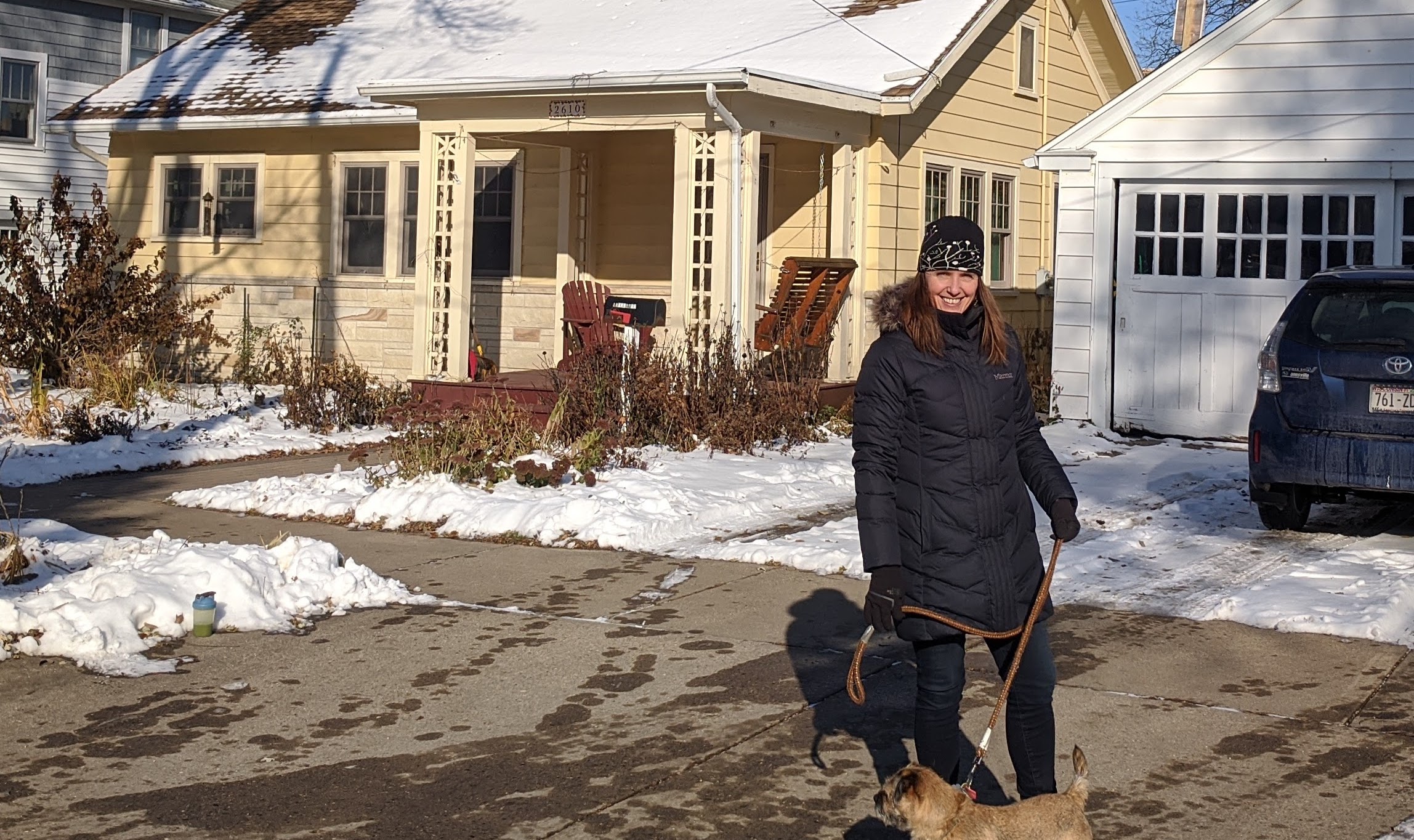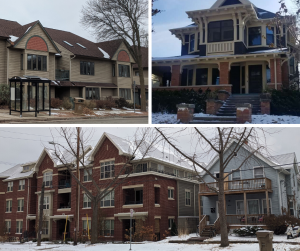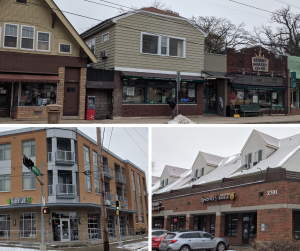
News
By Smart Growth America, November 22, 2019
 family-friendly cities need more housing and more housing variety. Cities should re-legalize modest homes and missing middle housing that allows choice and makes them attractive places to live in the first place. In fact, creating a family-friendly city is more about going back to the past than about creating something new.
family-friendly cities need more housing and more housing variety. Cities should re-legalize modest homes and missing middle housing that allows choice and makes them attractive places to live in the first place. In fact, creating a family-friendly city is more about going back to the past than about creating something new.
When people think of "cities" they may think of high rises and big buildings. But cities can have so much more: single-family detached homes, duplexes, townhouses, condos, and small apartments. Cities can have yards. Cities can have small, quiet streets where kids and parents can walk, ride a bike, or play with the dog. People can get to know their neighbors because they can travel without cars. To be sure, cities—and even smaller suburbs—often have taller buildings with lots of office space and homes, but family-friendly cities need to have a variety of housing types. The key is balance, with some detached housing, some mid- to high-rise buildings and a lot of everything in the middle.
 Image via MissingMiddleHousing.com
Image via MissingMiddleHousing.com
In my childhood hometown—a streetcar suburb built in the 1920s outside Chicago—the small downtown was built around the commuter rail station and apartments topped the stores along the surrounding commercial streets. The adults in my hometown walked from single-family homes and apartments to the train that took them into the city. Today, many of them bike to the train station. Kids could and did walk and ride their bikes to school. Now more apartments, condos, and townhouses are being built near the downtown to fill in the housing options.

Sound idyllic and impossible today? It shouldn't be. My current neighborhood in Madison, WI—a medium-sized, growing, thriving city—feels similar to my childhood hometown with an array of housing choices. On my block there are a couple of duplexes, a three flat (aka triplex), and one brick building with six apartments mixed with single-detached homes of various sizes. Mine is a very small one (pictured up top), not much bigger than a two-bedroom apartment, but with a basement, attic, front porch, and back yard. I'm living there by myself, so I don't need or want more than that. The next block over there are some larger apartment buildings, and within a short walk I can reach a couple of condo buildings and big, old historic homes. There are residential options for students, empty nesters, and yes, families.
I've been in my house for 25 years, so I watched the last generation grow up, go to college, and move away. But my block has more kids today than ever before; there are roughly two dozen kids under 10 years old on our block alone. And everything a family could need is easily accessible without a car. We have multiple bus lines within two blocks of my house—so many that I don't check the schedule in the morning. The elementary school and high school—both highly respected—are within walking distance. Down the street there is a small park that is a favorite with families, and I see parents chatting as their kids play on the equipment. There is a small grocery co-op within a 10 minute walk. A full-service grocery store and Target that can be reached by bike in 10 minutes on quiet streets, or by the frequent buses nearby. We have restaurants, a couple bars, some small stores, and even a hotel within a short walk.

Making a family-friendly neighborhood or city isn’t just about space for kids and families, though. One of the things I especially appreciate as I age is that people can find housing for any stage of life within the neighborhood. You can be a young single person, a couple, a new family, a huge family, an empty nester, or a senior and find your space in the same area. You can rent or own any number of variations of size and configuration.
Unfortunately, family-friendly communities such as mine are hard to find. Requirements for wide streets, lots of parking, and zoning that doesn’t allow apartments next to detached homes makes it tough to duplicate this type of neighborhood with a variety of housing choices to match the variety in life. In some areas it's all but impossible to find anything other than single-detached homes. In other places it’s hard to find single-family detached homes close to transit and shopping, or the houses that are available come with a hefty asking price. Maybe that tells you something: there is a premium for these walkable neighborhoods, and we need to build more of them.
The idea that cities can't be family-friendly is preposterous. Like kids, cities come in all shapes and sizes, and some of them have green space, good schools, and a variety of residential options. More cities used to be like this, but "modern" zoning often excludes everything but single-detached homes which means new housing is concentrated in a few, bustling neighborhoods. The result is cities that often lack the housing choice and affordability that families need. But by taking a cue from the past, cities can re-legalize more types of housing and create more walkable, liveable places for families and everyone.
Robbie Webber is a Senior Associate with the State Smart Transportation Initiative, a program of Smart Growth America in partnership with the University of Wisconsin based in Madison, WI.
Related News

© 2026 Smart Growth America. All rights reserved
Site By3Lane Marketing








